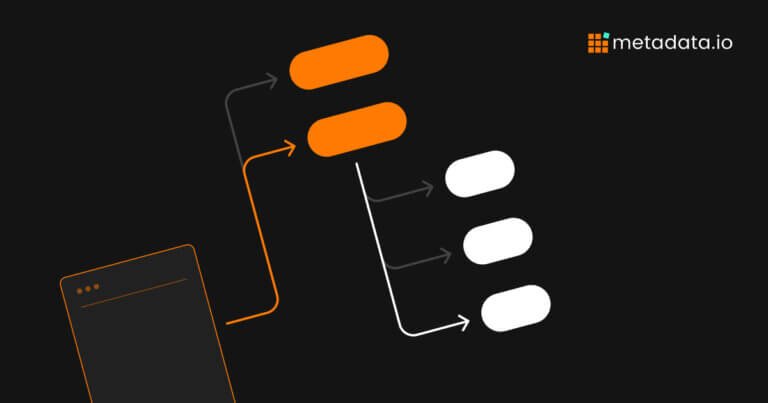14 Great Ideas for Your Account-Based Marketing Strategy

Table of Contents
If your B2B marketing efforts aren’t giving you the results you’re after, maybe it’s time to try a different approach that involves account-based marketing (ABM). This strategy zeroes in on high-value accounts instead of reaching out to everyone.
In this article, we’ll provide 14 account-based marketing ideas that you can implement in your strategy and grow your win rate.
14 Account-Based Marketing Ideas for Your Strategy
The best way to get the most out of ABM is by using various approaches to reach your clients. We’ll break them down below.
1. Prioritize the Right Accounts
Focus on the accounts that matter most to your business. Use data analytics to figure out which prospects offer the biggest return on investment. Consider things like revenue potential, strategic value, and how likely they are to convert. Zeroing in on these high-return accounts, also known as named accounts, maximizes your impact.
Also, segment your potential customers based on firmographics, behavior, and needs. Collaborate with your sales team to identify key accounts that align with your company’s objectives. Don’t overlook the importance of current client relationships; upselling and cross-selling to existing accounts can be just as valuable as acquiring new ones.
By narrowing your focus, you allocate resources more efficiently, ensuring that your marketing efforts are concentrated where they can generate the most significant results. Regularly review and adjust your target account list to reflect changes in the market or your company’s strategic direction.
2. Customize Content for Each Account
In ABM, one size definitely doesn’t fit all. Tailor your content to speak directly to each account’s unique needs. When you address specific pain points, you connect with decision-makers on a deeper level. This personal touch builds trust and increases your chances of turning leads into customers.
Consider developing personalized case studies, whitepapers, and presentations that highlight how your products or services can solve their specific challenges.
Implementing ungated content strategies can also encourage engagement by removing barriers to accessing your valuable content. Use language and references that are familiar to your clients, and address their industry trends and pressures. Engage with their social media posts and industry discussions to understand what matters most to them.
Identifying buyer intent and demonstrating a deep understanding of your client’s business also positions your company as a partner rather than just a vendor.
Personalization tokens in emails and landing pages can also enhance the user experience. Note that meaningful personalization goes beyond just using your client’s name; it involves delivering content that is relevant and valuable to them.
3. Use Multi-Channel Outreach
Don’t rely on just one way to reach out. Connect with your target accounts through multiple channels—email, social media, webinars, etc. This multi-channel approach ensures your message gets in front of decision-makers in ways that work for them, keeping your brand top of mind.
Continuously refining targeting strategies also boosts the impact of your multi-channel outreach. Each channel offers unique advantages and allows you to engage with stakeholders at different touchpoints. Understanding the ad formats across different social media channels can further optimize your approach.
4. Use Programmatic ABM
Looking to scale without losing that personal touch? Try programmatic ABM. It’s the best of both worlds—expanding your reach without sacrificing personalization.
Programmatic ABM uses technology platforms to automate the delivery of personalized content across various channels. It utilizes data-driven algorithms, so you can serve customized ads and messages to a broader audience of target accounts.
This approach is particularly effective when dealing with a large number of accounts that share similar characteristics. It also enables you to maintain a level of personalization that resonates with each account, without the resource-intensive process of creating entirely bespoke campaigns for each one. Marketing automation tools can help streamline this process.
5. Use Predictive Analytics
Tap into predictive analytics to spot your best prospects and understand their behaviors. This lets you tailor your messaging even more precisely, improves lead conversion, and ensures you’re using your marketing resources wisely.
Predictive analytics uses historical data, machine learning, and statistical algorithms to forecast future outcomes. By analyzing patterns in customer data, you can identify which accounts are most likely to engage and convert. This allows you to prioritize efforts on accounts with the highest potential value.
Additionally, predictive models can help you anticipate customer needs and personalize your offerings accordingly. To achieve this, you can integrate predictive analytics tools into your CRM and marketing automation platforms.
6. Build Account-Specific Relationships
Build genuine relationships with decision-makers in your target accounts. Get to know their goals and consistently deliver value. You’ll cultivate trust and loyalty, positioning your company not just as a vendor but as a valuable partner.
Take the time to understand the organizational culture and preferences of each account. Schedule regular check-ins, not just when you’re pushing a sale, but to provide insights, updates, or valuable industry information. Personalize your interactions by acknowledging their achievements or changes within their company. Offer solutions that align with their long-term objectives, and be proactive in addressing potential challenges they might face.
If you demonstrate commitment and reliability, you strengthen the relationship, making it more resilient to competitors’ advances. Remember, strong relationships can lead to referrals and opportunities within other departments or associated companies.
7. Align Sales and Marketing Teams
Make sure your sales and marketing teams are working together. When both sides understand and execute the ABM strategy, it will maximize your success across targeted accounts and contribute to pipeline acceleration.
First, establish regular communication channels between sales and marketing, such as joint meetings and collaborative planning sessions. Define common goals and KPIs that both teams can work towards. Encourage your departments to share information; sales teams can provide valuable firsthand feedback from customer interactions, while marketing can offer data on engagement patterns and content effectiveness.
8. Conduct Detailed Account Research
Do your homework on each target account to gather insights that will shape your strategy. Understanding industry challenges and decision-making processes helps you craft marketing initiatives that really hit the mark.
Begin by analyzing the company’s annual reports, press releases, and news articles to grasp their financial health, strategic priorities, and recent developments. Use tools like LinkedIn to map out the organizational structure and identify key decision-makers and influencers.
Additionally, implementing a lead enrichment process can provide deeper insights into your prospects. Investigate their top competitors to understand external pressures they might be facing.
Pay attention to their digital footprint, including website content, social media activity, and customer reviews, to glean insights into their branding and customer engagement strategies. Gathering this comprehensive information allows you to tailor your messaging and value propositions to address their specific needs and pain points effectively.
9. Develop Account-Based Offers
Create offers tailored to each account’s unique needs. Address their specific challenges with personalized solutions. This shows your commitment and adds real value, increasing the chances they’ll become customers.
Consider developing custom proposals, bundles, or service packages that align directly with an account’s objectives. For example, if a target account is focused on improving operational efficiency, offer a solution package that specifically addresses this goal with measurable outcomes. Incorporate elements like free trials, exclusive access to premium features, or dedicated support teams to make your offer more attractive.
Pricing models should be as flexible as possible (within reason) to meet your client’s budgeting preferences. If you demonstrate that you’ve invested time and resources to develop a proposal just for them, you will differentiate yourself from competitors and also build trust and credibility.
10. Use Content Syndication
Get your content in front of your targets by sharing it across the platforms they use. This broadens your reach and puts your message in front of decision-makers in multiple contexts.
Identify industry publications, forums, and social media platforms frequented by your target accounts. By publishing thought leadership articles, case studies, and infographics on these channels, you can increase visibility and credibility. Use content syndication networks to distribute your content more widely. Ensure that the content you share is highly relevant and offers value—this encourages engagement and positions your company as a knowledgeable resource.
Track performance metrics on each platform to understand which channels are most effective. Additionally, consider collaborating with industry influencers or partners to co-create content and further extend your reach and impact.
11. Engage with Decision-Makers
Reach out directly to decision-makers. Personalized emails, event invitations, and connecting on professional networks can help build rapport. These personal connections increase the chances they’ll engage with you.
Before initiating contact, research them to understand their roles, interests, and communication preferences. Tailor your messages to align with their specific responsibilities and objectives. Offer insights or solutions that are immediately relevant to their challenges.
Consider inviting decision-makers to exclusive webinars, roundtable discussions, or industry events where they can gain value and network with peers. Engage with their content on social media by commenting thoughtfully or sharing their posts.
Additionally, techniques like reverse-IP pretargeting can help you reach decision-makers more effectively by serving targeted ads before direct engagement.
Building a genuine relationship requires consistent, respectful, and value-driven interactions over time. If you show that you respect their time and are invested in their success, you set the foundation for a productive partnership.
12. Measure and Optimize Performance
Keep an eye on your ABM metrics and use them to tweak your strategy as needed, keeping your efforts aligned with your business goals.
Define key performance indicators (KPIs) at the outset, such as engagement rates, pipeline progression, deal size, and conversion rates. Use analytics tools to collect and analyze data consistently. Schedule periodic performance reviews to assess what’s working and what isn’t. Engage both sales and marketing teams in these evaluations to gain comprehensive insights.
Be prepared to adjust targeting, messaging, or tactics based on the data. During this process, A/B testing can help determine the most effective strategies. To run experiments at scale, consider using Metadata’s platform to get results faster and save time on manual work.
13. Create Interactive Experiences
Interactive experiences like webinars or workshops designed specifically for your accounts are a great way for prospects to engage firsthand with what you offer. This captures stakeholders’ interest and builds deeper connections that lead to conversions.
Interactive experiences can range from virtual demos and personalized product walkthroughs to hands-on training sessions. For example, you might develop custom webinars that address the unique challenges or goals of a specific account. Incorporate live Q&A segments to encourage participation and address concerns in real-time. Gamification elements, such as quizzes or interactive assessments, can make the experience more engaging.
Collect feedback from these sessions to further refine your approach and strengthen relationships.
14. Deploy Content Offers Strategically
Provide high-value content—like whitepapers or case studies—when your accounts are ready for it. This makes them more relevant and showcases your expertise, encouraging them to move forward in their buying journey.
Early-stage prospects might benefit from educational materials that raise awareness about a problem, while mid-stage prospects may find comparison guides or detailed case studies more valuable.
Use insights from your account research to determine the optimal timing and format for content delivery. Personalize the content by including references to the account’s industry, challenges, or goals. It’s also helpful to use marketing automation tools to trigger content offers based on behaviors or milestones.
Tips to Successfully Implement Your ABM Ideas
By now, you should already have a couple of ideas for improving your ABM strategy. The next step to success is to implement them right. Here’s how you can do it:
1. Sync Up Your Teams: Success in ABM relies on seamless collaboration between sales, marketing, and customer service. When everyone is on the same page, your messaging stays consistent throughout the customer’s journey. This unified approach simplifies processes and aligns strategies toward shared goals, making the best use of your resources.
Foster open communication and shared objectives to eliminate silos that often hinder progress. Regular team meetings and integrated project management tools can facilitate this collaboration, ensuring that every team member is aware of their role in achieving the company’s targets.
2. Personalize Everything: Personalization is at the heart of ABM. Tailor your outreach to address the unique challenges and needs of each account. Use data insights to create content that really resonates, boosting engagement and conversion rates. Leverage advanced analytics to understand customer behavior, preferences, and purchase history. This deeper level of personalization can differentiate you from competitors by demonstrating a genuine understanding of your clients’ needs.
3. Choose Your Channels Wisely: Don’t limit yourself to one method. Use emails, social media, direct mail, and more to create a cohesive, personalized experience at every touchpoint. This multi-channel approach keeps target accounts engaged and enhances the effectiveness of your outreach. Assess which channels your target accounts frequent the most, and focus your efforts there for maximum impact. Integrating your messaging across these platforms ensures a consistent brand voice and reinforces your value proposition.
4. Harness Tech and Data: Harness technology to gather and analyze data efficiently. Utilize CRM systems, marketing automation tools, and AI analytics to streamline your ABM processes. These technologies can help you predict market trends, personalize customer experiences, and optimize resource allocation.
Focusing on these strategies will set your ABM campaigns on the path to success through thoughtful coordination and targeted personalization.
Possible Challenges to Look Out For
Despite its benefits, ABM comes with its own set of challenges.
One big obstacle is aligning your marketing and sales teams. Traditionally, these departments have worked separately with their own systems. Now, even with improved integration technologies, the main issue is often a lack of teamwork.
Another challenge is understanding each client’s unique sales cycle. This often requires marketers to dive deeper into sales dynamics and account management than they’re used to. There are also additional hurdles like tracking and measuring results, personalizing content and campaigns, and adequately training sales teams.
So, how do you tackle these challenges?
- Promote Team Collaboration: Encourage a culture where marketing and sales work closely together. Regular meetings and joint planning sessions can align goals and processes.
- Cross-Functional Training: Help your marketing team understand sales cycles and account management. This equips them to better support sales initiatives.
- Use Integrated Tools: Invest in software solutions that offer strong analytics and data-sharing capabilities. Tools from reputable vendors can help bridge gaps between departments.
- Personalize Content: Tailor your content to meet each account’s unique needs. This improves campaign performance and resonates more effectively with clients.
- Establish Clear Metrics: Set clear KPIs to track how effective your ABM strategies are. This not only shows ROI but also helps you fine-tune your approach.
Metrics that Show Your Account-Based Marketing Ideas Are Working
Tracking the right metrics will help you identify which ABM ideas are working better than others. You can start with the following:
- Engagement Metrics: Watch email open rates, click-through rates, and how much time prospects spend with your content. This shows if your message is hitting home.
- Pipeline Velocity: Measure how quickly leads move through your sales pipeline. A faster pipeline suggests your sales and marketing are in sync, leading to quicker conversions. If pipeline velocity is slow, find out where leads are getting stuck and adjust your processes.
- Account Penetration: See how deeply you’re engaging within your target accounts. Are you reaching multiple contacts and levels within the organization? Use account penetration data to target primary decision-makers and influencers within your accounts.
- Win Rate: What’s the percentage of target accounts that turn into customers?
Transform Ideas into a Winning Account-Based Marketing Strategy
There are plenty of effective and innovative account-based marketing ideas ready to be implemented for great results, from personalized messaging to interactive experiences.
If you want to harness advanced analytics and automation to boost your paid campaigns, including ABM, Metadata’s platform can help you without adding more manual work to your plate.
Book a demo today to see exactly how you can benefit from our capabilities for advanced audience targeting, campaign automation, revenue optimization, and more.


